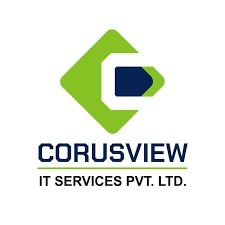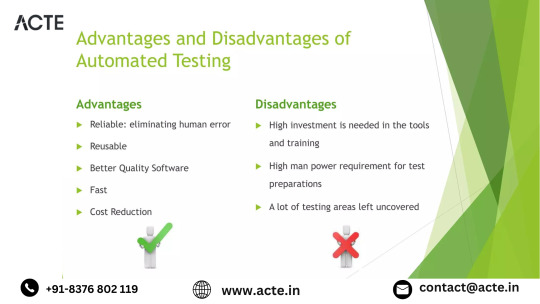#Continuous Integration Software Testing Strategies
Explore tagged Tumblr posts
Text
Continuous Integration (CI)/Continuous Deployment (CD) Software Testing Strategies
#Continuous Integration (CI)/Continuous Deployment (CD) Software Testing Strategies#Continuous Integration (CI)/Continuous Deployment (CD) Testing Strategies#Continuous Deployment (CD) Software Testing Strategies#Continuous Integration (CI) Software Testing Strategies#CD Software Testing Strategies#CI Software Testing Strategies#Continuous Integration Software Testing Strategies#Continuous Deployment Software Testing Strategies#Software Testing Services India#Software Testing Company India#Software Testing Services#Software Testing Company#QA Software Testing Services India#QA Software Testing Services#QA Software Testing Company India#QA Software Testing Company#QA Software Testing#Software Testing#Lucid Outsourcing Solutions#Lucid Outsourcing#Lucid Solutions
0 notes
Text

Updated B-52 electronic warfare suite will be tested in flight in 2024
Fernando Valduga By Fernando Valduga 03/29/2024 - 10:36 in Military
Flying through the skies since the 1950s, the B-52 Stratofortress is a U.S. Air Force (USAF) workhorse and a lasting symbol of American military power. The eight-engine giant has unique capabilities unparalleled to any other American warplane - which is why, after more than 70 years of service, it continues to play a vital role in the defense and national security strategy of the U.S. And thanks to a collaboration between L3Harris and USAF, this iconic aircraft is prepared to remain ready for the mission against highly sophisticated emerging threats in the coming decades.
Under a 10-year contract worth $947 million granted in 2021, L3Harris is upgrading and improving the AN/ALQ-172 electronic war self-protection system (EW), which protects the B-52 and air crews from a wide range of electronic threats. Our current work is based on decades of experience in providing critical technology as a Manufacturer of Original Equipment of the AN/ALQ-172 systems for the B-52 fleet. And combined with other ongoing modernization efforts, these updates will increase the relevance and reliability of the B-52 by the 2050s.

L3 Harris AN/ALQ-172 systems.
"Our opponents continue to evolve, facing advanced and far-reaching threats that challenge our ability to operate in contested environments," says Robert "Trip" Raymond, USAF's Program Leader for EW Technology Development at L3Harris. "It is essential that we provide our B-52 crew with the necessary tools to keep the B-52 relevant, lethal and survivable as the backbone of the strategic bomber force of the United States."
The effort of modernization and support - ALQ-172 Maintenance and Reliability System (MARS) - intends to do exactly that, increasing the average time between failures due to its modular design, while further improving the performance, maintenance capacity and reliability of the system. Thanks to an integrated and improved radio frequency system, crews will be able to simultaneously combat multiple radar threats that interfere with aircraft operations. And by replacing analog systems with more economical software solutions, USAF will be able to reduce the size of B-52 crews from 5 to 4. This frees up resources for additional mission-critical activities.
Ultimately, the updates will further help USAF in its Global Attack Mission and strengthen the effectiveness of the B-52 in modern warfare, while making future upgrades cheaper and easier.
"We are implementing affordable solutions that not only reduce costs, but also provide crews with more advanced protection against the most sophisticated threats detected by radar," said Jimmy Mercado, Program Director at L3Harris. "All this results in a more modern, efficient and effective aircraft, ready to dominate the future struggle."
USAF plans to conduct a test flight with the new electronic warfare capabilities of the B-52 in 2024.
Tags: Military AviationBoeing B-52H StratofortressEW - ELECTRONIC WARL3HarrisUSAF - United States Air Force / U.S. Air Force
Sharing
tweet
Fernando Valduga
Fernando Valduga
Aviation photographer and pilot since 1992, he has participated in several events and air operations, such as Cruzex, AirVenture, Dayton Airshow and FIDAE. He has works published in specialized aviation magazines in Brazil and abroad. He uses Canon equipment during his photographic work in the world of aviation.
Related news
AERONAUTICAL ACCIDENTS
VIDEO: Russian Su-27 fighter in flames falls into the sea near Sevastopol
29/03/2024 - 09:43
An F-16 fighter from the Norwegian air force lands at a Turkish air base in the Turkish city of Konya, in Central Anatolia. Norway, a member of NATO, will donate F-16 fighters to Ukraine, whose forces are involved in a difficult counter-offensive against Russia. (Photo: AP / Burhan Ozbilici)
MILITARY
Putin threatens to attack NATO air bases that host Ukrainian F-16 fighters
28/03/2024 - 21:56
MILITARY
Retirement from F-22 in 2030 is unlikely, since USAF intends to spend $7.8 billion on it before that
28/03/2024 - 21:16
MILITARY
IMAGES: Inaugural flight of the first light combat aircraft Tejas Mk 1A
28/03/2024 - 18:27
Dassault Rafale Fighter. (Photo: Katsuhiko Tokunaga)
MILITARY
France tests Thales' IRST system update for Rafale F4.2 update
28/03/2024 - 15:00
MILITARY
Dutch drone fleet MQ-9A Reaper will receive tactical updates
28/03/2024 - 14:00
37 notes
·
View notes
Text
Integrating Skill Assessments into Your Existing HR Systems

Introduction
As organizations strive to build a skilled and efficient workforce, integrating skill assessments into existing HR systems has become a crucial strategy. By embedding skill evaluations within HR workflows, companies can enhance hiring accuracy, streamline employee development, and make data-driven workforce decisions. This blog explores the benefits, challenges, and best practices of integrating skill assessments into HR systems, with insights on how platforms like Gappeo can facilitate the process.
Why Integrate Skill Assessments into HR Systems?
Integrating skill assessments within HR platforms offers numerous advantages, including:
Improved Hiring Accuracy: Objective skill evaluations help recruiters identify the most suitable candidates, reducing reliance on resumes alone.
Efficient Onboarding: Pre-assessed skills enable HR teams to tailor onboarding programs, ensuring new hires receive targeted training.
Employee Development & Training: Ongoing skill assessments allow HR teams to track employee growth and implement personalized training programs.
Workforce Planning: Insights from assessments help HR leaders identify skill gaps and plan for future workforce needs.
Key Considerations for Integration
Before incorporating skill assessments into your HR system, consider the following:
Compatibility: Ensure the assessment platform integrates seamlessly with your existing HR software (e.g., ATS, LMS, or HRIS).
Customization: Choose a system that allows tailored assessments aligned with job roles and industry needs.
Scalability: The platform should support growing workforce demands and adapt to evolving skill requirements.
User Experience: Both recruiters and candidates should find the system easy to navigate and engage with.
How Gappeo Simplifies Skill Assessment Integration
Gappeo, a leading talent and skill assessment platform, offers seamless integration with various HR systems. Key features include:
Pre-Built API Integrations: Easily connect with popular HR platforms.
Customizable Assessment Modules: Design skill tests specific to job roles.
Audio and Video Assessments: Enhance evaluation accuracy by analyzing verbal and non-verbal cues.
Comprehensive Reporting: Generate insights to support hiring and workforce development decisions.
Steps to Successfully Integrate Skill Assessments
Evaluate Your HR System: Assess your current HR software capabilities and identify integration points.
Select the Right Assessment Platform: Choose a solution like Gappeo that aligns with your HR objectives.
Customize Assessments: Develop skill tests that reflect the competencies required for different roles.
Pilot Test the Integration: Run a small-scale implementation to ensure seamless functionality.
Train HR Teams: Educate HR personnel on using the integrated system effectively.
Monitor and Optimize: Continuously track performance metrics and refine assessment processes.
Conclusion
Integrating skill assessments into HR systems is a game-changer for talent management, enabling data-backed hiring, employee development, and strategic workforce planning. With solutions like Gappeo, organizations can streamline skill evaluations while ensuring a seamless experience for both HR professionals and candidates.
Ready to enhance your HR processes? Discover how Gappeo can help you integrate skill assessments effortlessly!
#assessment#hiring#recruitment#saas development company#saas platform#hr#hrsystems#hrprocesses#evaluation
3 notes
·
View notes
Text
Automation Testing - Alt Digital Technologies
Maintaining exceptional quality is a top priority in the race to deliver software faster. Automation testing has emerged as a game-changer, making it possible to balance rapid development with robust functionality. While manual testing provides a personal touch, automation testing handles repetitive tasks efficiently, thus saving time and resources.
In this guide, we will discuss the core principles of automation testing, its benefits, and the tools that make it so effective. Whether you are a beginner in software testing or an experienced professional looking to refine your skills, this guide will help you understand how automation testing can drive your software quality to the next level.
What is Automation Testing?
Automation Testing involves using specialized tools and scripts to automatically execute test cases, compare the actual results with the expected results, and generate reports. Unlike manual testing, which requires human intervention, automation allows for the execution of repetitive tests with minimal effort, making it ideal for regression testing, performance testing, and other repetitive tasks.
In automation testing, scripts are written to mimic user interactions with the application. These scripts can be reused across multiple test cycles, making the testing process faster, more reliable, and more scalable.
The Power of Automation Testing
Automation testing has become a key pillar of modern software testing strategies, offering numerous advantages over traditional manual testing. Here's why automation is indispensable in today's software development landscape:
Speed and Efficiency: Automated tests run much faster than manual testing. Therefore, more tests can be executed within less time. This helps in shortening the testing cycle and thus quickens the development process as a whole.
Consistency and Accuracy: Since there is no human factor, automation ensures that tests are performed in a consistent and repeatable manner with minimal opportunities for human error. The result is more accurate.
Reusability: Once the test scripts are prepared, they can be used repeatedly across multiple testing cycles and projects, thus saving a lot of money in the long term.
Scalability: Automated tests can be scaled up to handle high volumes of tests that would be too large for manual testers to cover. As software becomes increasingly complex, automated testing can easily scale to include more functionality.
CI/CD: Automation enables continuous testing of a CI/CD pipeline, thus allowing teams to catch bugs early in the development process and release updates more frequently.
Different Types of Automation Testing
Automation testing is not a one-size-fits-all. It encompasses multiple types of testing techniques that are suitable to different aspects of software development:
Regression Testing: It is one of the most common use cases for automation. It ensures that new code changes haven't introduced any defects into existing functionality.
Performance Testing: Automated tools can simulate multiple users interacting with an application simultaneously, which helps in assessing its performance, load capacity, and scalability under stress.
Functional Testing: Automation tools are used to run predefined test cases to ensure that an application's functionality functions as expected. This is an essential type of testing, given that the core functions of the software must be stable after updates or enhancements.
Smoke Testing: You can automate the running of a suite of simple tests that ensure the application is ready for more testing. It catches major problems in the development cycle early.
Acceptance Testing: Automated tests mimic the end-user interactions that test if the application meets the business requirements and is ready for release.
Integration Testing: This type of testing checks that different components of the software work as desired. Automated integration tests guarantee that changes in one section of the system do not harm other sections.
Automation Testing Tools
To reap maximum benefits from automation testing, using the right tools is critical. Here are some of the best tools that software teams are making use of today:
Selenium: One of the most used open-source tools for web application testing. Selenium supports multiple programming languages, such as Java, Python, and C#, and is generally used for automating browser interactions.
JUnit: A testing framework mainly for Java applications, JUnit is used to write and run repeatable tests. It's an essential tool for integration and unit testing.
TestComplete: This is a commercial testing tool with functional automation capabilities, offering support for a variety of platforms, such as desktop applications, web applications, and mobile applications.
Appium: A cross-platform mobile application automated tool, in which Appium allows its testers to write tests for Android and iOS devices using a single API.
Cucumber: A BDD tool to write tests. Cucumber allows the test writers to write tests in natural languages, making it easy to understand and share.
Postman: Primarily used for API testing, Postman helps automate requests to REST APIs, validating responses and ensuring proper integration of backend services.
Benefits of Automation Testing
Automation testing requires a one-time investment in tools and script development, but long-term benefits make it a worthwhile effort:
Faster Time-to-Market: Automation speeds up the testing process, thereby reducing the overall time taken to get a product to market.
Reduced Human Error: Automation eliminates the chance of human errors, thus ensuring that tests are executed consistently and accurately.
Cost Savings: Although creating automation scripts might take time, in the long run, automation saves time and money by not having to repeat the same thing manually.
Increased Test Coverage: Automated tests can cover more scenarios and run tests more frequently than manual testing, thus helping to identify bugs earlier in the development process.
Better Resource Use: Through automation, testers who otherwise would be tedious to focus on complex testing and exploration, while automatically taking over the redundant workloads.
Automation Testing Challenges
Although automation testing yields tremendous advantages, there are drawbacks as well that organizations need to know more about:
High One-Time Set-up Cost: Creating the right automation tools might cost significant amounts, specifically to set up and train teams together with having to develop some test scripts.
Maintenance Overhead: Automation scripts need to be updated from time to time in order to maintain their effectiveness in changing applications. Tests change just as the application does and sometimes this is expensive to do.
Not Suitable for All Test Cases: All tests cannot be automated. Some tests involve lots of dynamicity, use judgment, or are run so seldom that they may not make a good candidate for automation.
Technical Skills Required: Writing and maintaining automated test scripts requires knowledge of programming and test automation frameworks, which can be a barrier for some teams.
Best Practices for Automation Testing
To get the most out of automation testing, consider the following best practices:
Start Small: Begin with automating repetitive tests, such as regression tests, and gradually expand as you gain more experience.
Use Version Control: Store your automation scripts in a version control system like Git to track changes and ensure collaboration among team members.
Design Maintainable Tests: Write modular, reusable test scripts that are easy to maintain as your application changes over time.
Focus on High-Value Tests: Automate tests that are run frequently or involve large data sets to get the most benefit from automation.
Integrate with CI/CD: Integrate automation tests into your CI/CD pipeline to catch bugs early and improve the efficiency of your development process.
Conclusion
Automation testing is changing how we think about software quality. Automated tests save repetitive and tedious hours, making it easier for companies to have faster, more reliable testing of software products, with the consequent improvement in quality and speeding up of the time-to-market. Here at Alt Digital Technologies, we provide expert support for your organization's needs in automating your testing strategy and helping you scale. Our experienced team can take you from the initial tool selection through efficient script writing and integrating automation into your development workflow.
Contact us to help you unlock the full potential of automation testing and take your software quality assurance efforts to new heights.
2 notes
·
View notes
Text
Transforming Digital Landscapes: The Excellence of Corusview IT Services.

In today's fast-paced digital world, having a reliable and innovative technology partner is crucial for businesses aiming to stay ahead. Corusview IT Services, a leading web development company, stands out by offering top-tier software, web and mobile application development services. With a commitment to quality, reliability, and global reach, Corusview IT Services ensures that clients receive exceptional value for their investments.
In the ever-evolving digital landscape, businesses often face a myriad of challenges when it comes to web, mobile, and software development. Navigating these hurdles can be daunting, but the right technology partner can turn these challenges into opportunities.
Common challenges in Digital development:
Complexity and integration challenges
Web Development: Building dynamic, responsive, and user-friendly websites that effortlessly integrate with existing systems can be quite intricate.
Mobile Development: Creating mobile applications that function seamlessly across various devices and platforms while delivering an excellent user experience poses a significant challenge.
Software Development: Developing custom software solutions that need to integrate with multiple other applications and databases often results in compatibility issues.
Staying current with technology
The fast-paced nature of technological advancements makes it challenging for businesses to remain up-to-date with the latest trends and tools.
Ensuring digital solutions are scalable and future-proof demands continuous investment and specialized expertise.
User experience and design
Developing an intuitive and engaging user experience is essential for the success of any digital product.
Subpar design and usability can result in low user engagement and satisfaction.
Security and compliance
Maintaining the security of digital solutions and adhering to regulatory requirements is a critical concern. Data breaches and security vulnerabilities can have significant consequences for businesses.
How Corusview IT Services can assist:
Corusview IT Services provides a broad range of solutions specifically crafted to tackle these challenges and support businesses in thriving within the digital landscape.
Expert web development
Custom web development: Tailored solutions crafted to fit your unique business requirements.
Content Management Systems (CMS): User-friendly systems that simplify website updates and maintenance.
Cutting-Edge Mobile App Development
Mobile App Creation: Bespoke apps designed to meet the needs of diverse industries.
Cross-Platform Solutions: Strategies that extend your app’s reach and boost its effectiveness across different platforms.
Ongoing Updates and Support: Regular enhancements and maintenance to keep your app fresh, secure, and up-to-date.
User-centric designs
UX and UI Innovation: Creating immersive and visually appealing designs tailored to enhance user interaction.
Prototyping and Usability Testing: Developing and refining prototypes to ensure optimal functionality and user satisfaction.
Ongoing Enhancement: Continuously evolving designs based on user feedback to maintain relevance and effectiveness.
Pioneering Technology and Innovation
Forefront of technological advancements, embracing the latest innovations to deliver state-of-the-art solutions.
Cutting-edge technology ensures your digital products are not only scalable and future-ready but also perfectly in tune with the latest market trends.
Rigorous Quality Assurance:
Implementing comprehensive quality assurance processes to ensure that every solution meets the highest standards of performance and reliability.
At Corusview IT Services, we’re dedicated to helping businesses tackle digital development challenges and achieve their ambitions. Whether you need a cutting-edge website, a bespoke software solution, or a trailblazing mobile app, our skilled team is here to provide top-notch results.
Elevate your digital game with us and witness the transformative power of our solutions. Learn more about how we can boost your company’s digital presence by visiting www.corusview.com.
#it services#technology#web development#mobile development#software development#software development company#web app development#mobile application development#digital marketing#services
4 notes
·
View notes
Text
What are some challenges in deploying machine learning models into production?
Deployment of machine learning models into production involves a number of challenges that have to be dealt with to make sure that the models work fine in real-world environments. These include:
Scalability:
One major challenge will be to make the machine learning model robust with respect to the volume of data it is going to process in production. This basically includes large volumes of data being processed efficiently and quickly. Most of the time, this requires run-time performance optimization of the model and infrastructural considerations of distributed computing and cloud services for scaling.
Existing System Integration:
This makes the integration of machine learning models within existing software systems or workflows quite complex. The model should play well with other components, whether it is databases, APIs, or user interfaces. Ensuring interoperability and ease in integration will require planning and testing to be taken seriously.
Model Monitoring and Maintenance:
Models in deployment should be continuously monitored to ensure that everything works as expected, tracking accuracy, latency, and error rates. Over some time, models will degrade in performance due to changes in the distribution of data or other factors. Noting such degradation regularly, it should be re-trained and updated to be effective.
Data Management:
Data pipeline management is key to the quality and consistency of the data provided to the model. This shall consist of correct collection, cleaning, and preprocessing of data. Any kinds of errors in data quality will upset the performance and reliability of the model.
Handling Model Drift:
Model drift occurs when the statistical properties of the target variable change over time, which causes a decrease in model performance. Model drift detection and handling involve the process of tracking changes in the pattern of data and updating the model accordingly in order to deal with new situations.
Security and Privacy:
This is important for the unauthorized access protection of the model and data and for compliance purposes concerning data privacy regulations. More than that, sensitive information should be secure from leaking through data breaches by putting security controls in place.
Resource Management:
Machine learning model deployment can be resource-intensive. It requires adequate computational resources for model training and inference and proper resource allocation for managing operational costs arising from running the model in production.
Performance Optimization:
The model should perform well in terms of response time and resource usage. It may need performance optimization by various techniques, such as model compression or quantization for better inference speed, or hardware accelerators. User Acceptance and Feedback:
The deployed model can expect success only through user acceptance and feedback. This would be possible if the models were user-friendly and provided actionable insights to a great extent. There is a need to get feedback from the end-users and incorporate it into model improvements so that desired outcomes can be realized.
Documentation and Transparency:

In general, there are a lot of challenges associated with deployment, including issues of scalability, integration, monitoring, data management, and security, which can be overcome only by careful planning, ongoing maintenance, and a robust deployment strategy that will ensure the model gives reliable and valuable results in the real world.
3 notes
·
View notes
Text
Unlock Success in Cryptocurrency: The Power of a Binance Clone Script
Learn how to transform your cryptocurrency exchange business using a Binance clone script. Our customizable Binance clone script allows you to easily and efficiently develop and launch your own trading platform, replicating the features of the renowned Binance exchange. With our script, you can ensure scalability and customer engagement through multi-currency support, secure trading, real-time analytics, and more. Whether you're a startup or looking to maintain your competitive edge, our Binance clone script offers numerous benefits.
What is a Binance Clone Script?
A Binance clone script is a ready-made software solution designed to mimic the features and functionalities of the popular Binance cryptocurrency exchange. This script simplifies the process of integrating a Binance-like trading platform into your business, offering entrepreneurs a hassle-free way to enter the cryptocurrency exchange market.
Key features of the Binance clone app include multi-currency support, secure trading mechanisms, and real-time market analytics. Its customizable options make setup and integration straightforward, ensuring a quick and competitive entry into the cryptocurrency exchange market.
Benefits of Choosing a Binance Clone Script
Opting for a Binance dex clone script offers numerous advantages for cryptocurrency entrepreneurs. This out-of-the-box solution, modeled after Binance, speeds up the creation of a robust cryptocurrency exchange platform. Key benefits include:
Quick Deployment: Rapidly launch your exchange platform.
Cost Efficiency: Reduce development costs significantly.
Customization: Tailor the script to meet your business needs.
Enhanced Security: Ensure safe trading with built-in security features.
Multi-Currency Support: Attract a broader user base with support for various currencies.
Real-Time Analytics: Improve user engagement and operational efficiency.
A Binance clone script helps businesses quickly carve out a competitive niche in the dynamic crypto market.
Profitability of a Binance Clone Script
Using a Binance clone script can lead to significant financial success for cryptocurrency businesses. This ready-made solution allows for rapid entry into the growing cryptocurrency exchange market, reducing both development costs and time-to-market. Robust features like secure transactions, multi-currency support, and real-time analytics enhance user satisfaction and operational efficiency. Customizable options enable businesses to adapt to market trends and customer preferences, fostering long-term profitability. For startups, a Binance clone script builds traction and credibility, making it a strategic investment for optimizing profits and ensuring sustained growth.
Developing a Crypto Exchange with a Binance Clone Script
Developing a cryptocurrency exchange with a Binance clone app is straightforward and effective:
Acquire the Script: Obtain a reliable Binance clone script from a reputable provider.
Customize the Script: Adjust the script to fit your branding and business needs, including secure trading, multiple currency pairs, and a strong backend architecture.
Add Key Features: Incorporate essential features such as wallet management, real-time market analytics, and user authentication.
Test Thoroughly: Ensure all functionalities and security measures work correctly through rigorous testing.
Launch and Market: Deploy your exchange on a secure platform and attract users with effective marketing strategies.
Monitor and Update: Continuously monitor and update the exchange to adapt to changing market conditions and regulatory requirements.
Following these steps will help you establish and run a competitive cryptocurrency exchange platform successfully.
Cost of Building a Binance Clone App
The cost of developing a Binance clone app depends on feature requirements and customization options. Factors affecting cost include the complexity of additional features like security enhancements and multi-currency support. While costs can vary, choosing a reliable provider ensures competitive pricing without compromising quality. Focus on essential features initially, scaling as needed to maintain affordability and long-term profitability.
Why Choose a Binance Clone Script from Alphacodez?
Alphacodez offers a superior Binance clone script with several benefits for cryptocurrency exchange platforms:
High-End Customization: Tailor the script to meet your specific business needs.
Top Security Features: Ensure safe and secure trading.
Multi-Currency Management: Attract and retain a diverse user base.
User-Friendly Interface: Simplify platform setup and enhance user experience.
Technical Support: Receive ongoing support to ensure optimal platform performance.
By choosing Alphacodez, you get a reliable and scalable solution designed to help your brand thrive in the competitive cryptocurrency market, ensuring long-term success and profitability.
Explore the possibilities with a Binance clone script from Alphacodez and take your cryptocurrency exchange business to new heights.
Do you want more about cryptocurrency exchange related check our site or contact directly
Refer :
Instant Reach Experts: call / whatsapp - +91 8122957365 Skype: live:.cid.8caadfdd27285d43 Telegram: https://telegram.me/alphacodezz
#cryptoexchange#crypto#cryptocurrency exchange#binance clone script#binance clone software#binance clone app#blockchain#technology#usa#india#binance#bitcoin
3 notes
·
View notes
Text
Business Operations Plan for Eco Green Candles
Eco Green Candles is a sustainable candle business located in Greater Sudbury, Ontario, Canada. Our mission is to provide environmentally friendly candles made from natural ingredients and packaged using eco-conscious materials. This operations plan outlines the key strategies and processes we will implement to ensure the smooth functioning of our business.
Production Process
Ingredient Sourcing: We will source high-quality natural waxes such as soy or beeswax, along with essential oils for fragrance, from trusted suppliers with a commitment to sustainability.
Candle Making: Our candles will be handcrafted in small batches to maintain quality and consistency. We will utilize environmentally friendly production techniques and minimize waste throughout the manufacturing process.
Packaging: Eco Green Candles will be packaged using biodegradable and recyclable materials to reduce environmental impact. We will work with suppliers who share our commitment to sustainability.
Inventory Management
Stocking Levels: We will maintain optimal inventory levels to meet customer demand while minimizing excess stock. Regular inventory assessments will be conducted to ensure efficient stock turnover.
Quality Control: All incoming materials and finished products will undergo rigorous quality control checks to ensure adherence to our high standards of quality and sustainability.
Sales and Distribution
Sales Channels: Eco Green Candles will be sold through multiple channels, including:
Online store
Local retailers specializing in eco-friendly products
Farmers' markets and craft fairs
Distribution Strategy: We will establish partnerships with local courier services for efficient and eco-friendly delivery of online orders. For wholesale orders, we will work closely with retailers to ensure timely delivery and replenishment of stock.
Marketing and Promotion
Brand Identity: We will develop a strong brand identity centered around our commitment to sustainability and environmental stewardship.
Online Presence: Our website and social media channels will serve as platforms to showcase our products, share our story, and engage with customers.
Promotional Activities: We will participate in community events, collaborate with local influencers, and offer promotions to attract new customers and retain existing ones.
Customer Service
Communication: We will maintain open and transparent communication channels with our customers, responding promptly to inquiries and addressing any concerns or feedback.
Customer Education: Eco Green Candles will provide resources and information to educate customers about the benefits of using eco-friendly candles and the importance of sustainability.
Operational Efficiency
Workflow Optimization: We will continuously review and streamline our operational processes to maximize efficiency and minimize waste.
Technology Integration: We will leverage technology solutions such as inventory management software and automated systems to streamline operations and improve productivity.
Financial Management
Budgeting: We will develop a detailed budget outlining projected expenses and revenue streams, allowing us to effectively manage our financial resources.
Profitability Analysis: Regular financial analysis will be conducted to assess the profitability of our products and identify areas for improvement.
Regulatory Compliance
Product Safety: We will ensure compliance with all relevant regulations and standards for the manufacturing and sale of candles, including safety labeling and product testing.
Environmental Regulations: Eco Green Candles will adhere to local and national environmental regulations regarding waste disposal, emissions, and sustainability practices.
Conclusion
The successful operation of Eco Green Candles relies on the effective implementation of the strategies outlined in this plan. By prioritizing sustainability, quality, and customer satisfaction, we aim to establish Eco Green Candles as a trusted provider of environmentally friendly candles in Greater Sudbury and beyond.
Thank you for your support as we embark on this journey to promote environmental stewardship through our business endeavors.
2 notes
·
View notes
Text
How AI is Reshaping the Future of Fintech Technology

In the rapidly evolving landscape of financial technology (fintech), the integration of artificial intelligence (AI) is reshaping the future in profound ways. From revolutionizing customer experiences to optimizing operational efficiency, AI is unlocking new opportunities for innovation and growth across the fintech ecosystem. As a pioneer in fintech software development, Xettle Technologies is at the forefront of leveraging AI to drive transformative change and shape the future of finance.
Fintech technology encompasses a wide range of solutions, including digital banking, payment processing, wealth management, and insurance. In each of these areas, AI is playing a pivotal role in driving innovation, enhancing competitiveness, and delivering value to businesses and consumers alike.
One of the key areas where AI is reshaping the future of fintech technology is in customer experiences. Through techniques such as natural language processing (NLP) and machine learning, AI-powered chatbots and virtual assistants are revolutionizing the way customers interact with financial institutions.
Xettle Technologies has pioneered the integration of AI-powered chatbots into its digital banking platforms, providing customers with personalized assistance and support around the clock. These chatbots can understand and respond to natural language queries, provide account information, offer product recommendations, and even execute transactions, all in real-time. By delivering seamless and intuitive experiences, AI-driven chatbots enhance customer satisfaction, increase engagement, and drive loyalty.
Moreover, AI is enabling financial institutions to gain deeper insights into customer behavior, preferences, and needs. Through advanced analytics and predictive modeling, AI algorithms can analyze vast amounts of data to identify patterns, trends, and correlations that were previously invisible to human analysts.
Xettle Technologies' AI-powered analytics platforms leverage machine learning to extract actionable insights from transaction data, social media activity, and other sources. By understanding customer preferences and market dynamics more accurately, businesses can tailor their offerings, refine their marketing strategies, and drive growth in targeted segments.
AI is also transforming the way financial institutions manage risk and detect fraud. Through the use of advanced algorithms and data analytics, AI can analyze transaction patterns, detect anomalies, and identify potential threats in real-time.
Xettle Technologies has developed sophisticated fraud detection systems that leverage AI to monitor transactions, identify suspicious activity, and prevent fraudulent transactions before they occur. By continuously learning from new data and adapting to emerging threats, these AI-powered systems provide businesses with robust security measures and peace of mind.
In addition to enhancing customer experiences and mitigating risks, AI is driving operational efficiency and innovation in fintech software development. Through techniques such as robotic process automation (RPA) and intelligent workflow management, AI-powered systems can automate routine tasks, streamline processes, and accelerate time-to-market for new products and services.
Xettle Technologies has embraced AI-driven automation across its software development lifecycle, from code generation and testing to deployment and maintenance. By automating repetitive tasks and optimizing workflows, Xettle's development teams can focus on innovation and value-added activities, delivering high-quality fintech solutions more efficiently and effectively.
Looking ahead, the integration of AI into fintech technology is expected to accelerate, driven by advancements in machine learning, natural language processing, and computational power. As AI algorithms become more sophisticated and data sources become more diverse, the potential for innovation in fintech software is virtually limitless.
For Xettle Technologies, this presents a unique opportunity to continue pushing the boundaries of what is possible in fintech innovation. By investing in research and development, forging strategic partnerships, and staying ahead of emerging trends, Xettle is committed to delivering cutting-edge solutions that empower businesses, drive growth, and shape the future of finance.
In conclusion, AI is reshaping the future of fintech technology in profound and exciting ways. From enhancing customer experiences and mitigating risks to driving operational efficiency and innovation, AI-powered solutions hold immense potential for businesses and consumers alike. As a leader in fintech software development, Xettle Technologies is at the forefront of this transformation, leveraging AI to drive meaningful change and shape the future of finance.
#Fintech Technologies#Fintech Software#Artificial Intelligence#Finance#Fintech Startups#technology#ecommerce#fintech#xettle technologies#writers on tumblr
6 notes
·
View notes
Text
Journey to Devops
The concept of “DevOps” has been gaining traction in the IT sector for a couple of years. It involves promoting teamwork and interaction, between software developers and IT operations groups to enhance the speed and reliability of software delivery. This strategy has become widely accepted as companies strive to provide software to meet customer needs and maintain an edge, in the industry. In this article we will explore the elements of becoming a DevOps Engineer.
Step 1: Get familiar with the basics of Software Development and IT Operations:
In order to pursue a career as a DevOps Engineer it is crucial to possess a grasp of software development and IT operations. Familiarity with programming languages like Python, Java, Ruby or PHP is essential. Additionally, having knowledge about operating systems, databases and networking is vital.
Step 2: Learn the principles of DevOps:
It is crucial to comprehend and apply the principles of DevOps. Automation, continuous integration, continuous deployment and continuous monitoring are aspects that need to be understood and implemented. It is vital to learn how these principles function and how to carry them out efficiently.
Step 3: Familiarize yourself with the DevOps toolchain:
Git: Git, a distributed version control system is extensively utilized by DevOps teams, for code repository management. It aids in monitoring code alterations facilitating collaboration, among team members and preserving a record of modifications made to the codebase.
Ansible: Ansible is an open source tool used for managing configurations deploying applications and automating tasks. It simplifies infrastructure management. Saves time when performing tasks.
Docker: Docker, on the other hand is a platform for containerization that allows DevOps engineers to bundle applications and dependencies into containers. This ensures consistency and compatibility across environments from development, to production.
Kubernetes: Kubernetes is an open-source container orchestration platform that helps manage and scale containers. It helps automate the deployment, scaling, and management of applications and micro-services.
Jenkins: Jenkins is an open-source automation server that helps automate the process of building, testing, and deploying software. It helps to automate repetitive tasks and improve the speed and efficiency of the software delivery process.
Nagios: Nagios is an open-source monitoring tool that helps us monitor the health and performance of our IT infrastructure. It also helps us to identify and resolve issues in real-time and ensure the high availability and reliability of IT systems as well.
Terraform: Terraform is an infrastructure as code (IAC) tool that helps manage and provision IT infrastructure. It helps us automate the process of provisioning and configuring IT resources and ensures consistency between development and production environments.
Step 4: Gain practical experience:
The best way to gain practical experience is by working on real projects and bootcamps. You can start by contributing to open-source projects or participating in coding challenges and hackathons. You can also attend workshops and online courses to improve your skills.
Step 5: Get certified:
Getting certified in DevOps can help you stand out from the crowd and showcase your expertise to various people. Some of the most popular certifications are:
Certified Kubernetes Administrator (CKA)
AWS Certified DevOps Engineer
Microsoft Certified: Azure DevOps Engineer Expert
AWS Certified Cloud Practitioner
Step 6: Build a strong professional network:
Networking is one of the most important parts of becoming a DevOps Engineer. You can join online communities, attend conferences, join webinars and connect with other professionals in the field. This will help you stay up-to-date with the latest developments and also help you find job opportunities and success.
Conclusion:
You can start your journey towards a successful career in DevOps. The most important thing is to be passionate about your work and continuously learn and improve your skills. With the right skills, experience, and network, you can achieve great success in this field and earn valuable experience.
2 notes
·
View notes
Text
Designing a website involves several key steps and considerations to ensure a visually appealing, functional, and user-friendly experience.
Certainly! Designing a website involves several key aspects to ensure a visually appealing, user-friendly, and functional site. Here are some key considerations and steps to guide you through the website design process:
Define Purpose and Goals:
Clearly define the purpose of your website and its goals. What do you want visitors to accomplish or gain from the site?
Identify Target Audience:
Understand your target audience's preferences, needs, and behaviors. Tailor your design to meet their expectations.
Choose a Design Concept:
Decide on the overall design concept, including color schemes, typography, and imagery. Ensure consistency to create a cohesive visual identity.
Wireframing:
Create wireframes to outline the basic structure and layout of your website. This helps in planning the placement of key elements before diving into detailed design.
Responsive Design:
Ensure your design is responsive, meaning it adapts to various screen sizes and devices. This is crucial for providing a seamless user experience across desktops, tablets, and mobile devices.
Navigation Design:
Design an intuitive and user-friendly navigation system. Use clear menus, breadcrumbs, and calls-to-action to guide users through your site.
Content Strategy:
Plan your content strategy. Ensure that your content is well-organized, easy to read, and supports your overall goals.
Visual Elements:
Use high-quality and relevant images, graphics, and videos. Visual elements should enhance the user experience and convey your brand message effectively.
Typography:
Choose readable fonts and maintain consistency throughout your website. Consider font sizes, line spacing, and color contrast for accessibility.
Branding:
Integrate your brand elements, such as logos and color schemes, consistently throughout the website. This helps in reinforcing brand identity.
Calls-to-Action (CTAs):
Strategically place CTAs to guide users towards desired actions, whether it's making a purchase, signing up for a newsletter, or contacting you.
Testing:
Regularly test your website design on different browsers and devices to ensure a consistent experience. Check for usability and fix any issues that may arise.
Feedback and Iteration:
Gather feedback from users and stakeholders. Use this feedback to make improvements and iterate on your design.
SEO Considerations:
Optimize your website for search engines by implementing SEO best practices. This includes using descriptive meta tags, optimizing images, and creating a clean URL structure.
Security:
Implement security measures to protect your website and user data. Use HTTPS, keep software updated, and follow best practices for web security.
Accessibility:
Design your website to be accessible to users with disabilities. Ensure compatibility with screen readers, provide alt text for images, and adhere to accessibility standards.
Launch:
Once everything is in place and thoroughly tested, launch your website. Monitor its performance and address any issues that may arise.
Remember that web design is an ongoing process, and staying updated with design trends and user feedback will help you continuously improve your website over time.
2 notes
·
View notes
Text
Mastering Selenium Testing: Overcoming Common Automation Challenges
Introduction: Selenium, renowned for its prowess in automation testing, is a cornerstone of modern software development. However, as testers embark on their Selenium journey, they encounter various challenges that can impede the efficiency and effectiveness of their automation efforts. In this guide, we delve into the common hurdles faced in Selenium testing and explore strategies to overcome them, empowering testers to excel in their automation endeavors.

Navigating Cross-Browser Compatibility: Ensuring consistent performance across diverse browsers is paramount in web application testing. However, achieving cross-browser compatibility with Selenium poses its share of challenges. Testers must meticulously validate their scripts across multiple browsers, employing robust strategies to address discrepancies and ensure seamless functionality.
Taming Dynamic Element Identification: Dynamic web elements, a common feature in modern web applications, present a formidable challenge for Selenium testers. The ever-changing nature of these elements requires testers to adapt their automation strategies accordingly. Employing dynamic locators and resilient XPath expressions helps testers tame these dynamic elements, ensuring reliable interaction and seamless test execution.
Synchronizing Actions in Asynchronous Environments: The asynchronous nature of web applications introduces synchronization issues that can undermine the reliability of Selenium tests. To mitigate these challenges, testers must implement effective synchronization techniques, such as explicit and implicit waits, to harmonize test actions with the application's dynamic behavior. This ensures consistent and accurate test execution across varying environmental conditions.
Efficiently Handling Frames and Windows: Frames and windows are integral components of web applications, presenting unique challenges for Selenium automation. Testers must adeptly navigate these elements, employing tailored automation strategies to interact with elements nested within frames and manage multiple browser windows seamlessly. This ensures comprehensive test coverage and accurate validation of application functionality.

Unlocking Performance Testing Potential: While Selenium excels in functional testing, leveraging it for performance testing requires careful consideration. Testers must explore complementary tools and frameworks to simulate realistic user interactions and assess application performance under varying load conditions. This holistic approach ensures comprehensive test coverage and robust performance validation.
Streamlining Test Maintenance Processes: Maintaining Selenium test suites is a perpetual endeavor, necessitating proactive strategies to adapt to evolving application requirements. Testers must prioritize modularization and abstraction, enabling seamless updates and enhancements to test scripts. Embracing version control and continuous integration practices further streamlines the test maintenance process, ensuring agility and efficiency in automation efforts.
Enhancing Reporting and Debugging Capabilities: Effective test analysis hinges on robust reporting and debugging capabilities. Testers must augment Selenium's native features with third-party reporting tools and frameworks to generate comprehensive test reports and streamline issue identification and resolution. This empowers testers to glean actionable insights and drive continuous improvement in test automation practices.
Empowering Data-Driven Testing: Data-driven testing is a cornerstone of robust automation strategies, yet managing test data poses its own set of challenges. Testers must implement scalable solutions for test data management, leveraging data-driven testing frameworks and integration with test management tools to enhance test coverage and efficiency. This ensures comprehensive validation of application functionality across diverse scenarios.
Ensuring Consistent Test Environment Setup: Establishing a consistent test environment is essential for reliable and reproducible test results. Testers must invest in robust environment provisioning and configuration management practices, ensuring parity across development, staging, and production environments. This minimizes environmental discrepancies and enhances the reliability of automation efforts.
Leveraging Community Resources and Collaboration: Navigating the intricacies of Selenium testing requires collaboration and knowledge-sharing within the testing community. Testers must actively engage with forums, online communities, and documentation to leverage collective wisdom and address challenges collaboratively. This fosters a culture of continuous learning and innovation, propelling automation efforts to new heights.
Conclusion: While Selenium testing presents its share of challenges, adeptly navigating these hurdles empowers testers to realize the full potential of automation testing. By embracing best practices, leveraging complementary tools and frameworks, and fostering a collaborative testing culture, testers can overcome obstacles and unlock the true power of Selenium for test automation.
3 notes
·
View notes
Text
The Dynamic Role of Full Stack Developers in Modern Software Development
Introduction: In the rapidly evolving landscape of software development, full stack developers have emerged as indispensable assets, seamlessly bridging the gap between front-end and back-end development. Their versatility and expertise enable them to oversee the entire software development lifecycle, from conception to deployment. In this insightful exploration, we'll delve into the multifaceted responsibilities of full stack developers and uncover their pivotal role in crafting innovative and user-centric web applications.

Understanding the Versatility of Full Stack Developers:
Full stack developers serve as the linchpins of software development teams, blending their proficiency in front-end and back-end technologies to create cohesive and scalable solutions. Let's explore the diverse responsibilities that define their role:
End-to-End Development Mastery: At the core of full stack development lies the ability to navigate the entire software development lifecycle with finesse. Full stack developers possess a comprehensive understanding of both front-end and back-end technologies, empowering them to conceptualize, design, implement, and deploy web applications with efficiency and precision.
Front-End Expertise: On the front-end, full stack developers are entrusted with crafting engaging and intuitive user interfaces that captivate audiences. Leveraging their command of HTML, CSS, and JavaScript, they breathe life into designs, ensuring seamless navigation and an exceptional user experience across devices and platforms.
Back-End Proficiency: In the realm of back-end development, full stack developers focus on architecting the robust infrastructure that powers web applications. They leverage server-side languages and frameworks such as Node.js, Python, or Ruby on Rails to handle data storage, processing, and authentication, laying the groundwork for scalable and resilient applications.
Database Management Acumen: Full stack developers excel in database management, designing efficient schemas, optimizing queries, and safeguarding data integrity. Whether working with relational databases like MySQL or NoSQL databases like MongoDB, they implement storage solutions that align with the application's requirements and performance goals.

API Development Ingenuity: APIs serve as the conduits that facilitate seamless communication between different components of a web application. Full stack developers are adept at designing and implementing RESTful or GraphQL APIs, enabling frictionless data exchange between the front-end and back-end systems.
Testing and Quality Assurance Excellence: Quality assurance is paramount in software development, and full stack developers take on the responsibility of testing and debugging web applications. They devise and execute comprehensive testing strategies, identifying and resolving issues to ensure the application meets stringent performance and reliability standards.
Deployment and Maintenance Leadership: As the custodians of web applications, full stack developers oversee deployment to production environments and ongoing maintenance. They monitor performance metrics, address security vulnerabilities, and implement updates and enhancements to ensure the application remains robust, secure, and responsive to user needs.
Conclusion: In conclusion, full stack developers embody the essence of versatility and innovation in modern software development. Their ability to seamlessly navigate both front-end and back-end technologies enables them to craft sophisticated and user-centric web applications that drive business growth and enhance user experiences. As technology continues to evolve, full stack developers will remain at the forefront of digital innovation, shaping the future of software development with their ingenuity and expertise.
#full stack course#full stack developer#full stack software developer#full stack training#full stack web development
2 notes
·
View notes
Text
Top Tips to Build a Secure Website Backup Plans

Why Website Backup Is Crucial
Website backup is a critical aspect of website management, offering protection against various threats and ensuring smooth operations. Here's an in-depth look at why website backup is essential:
1. Protection Against Data Loss: During website development, frequent changes are made, including code modifications and content updates. Without proper backup, accidental deletions or code errors can lead to irrecoverable data loss.
2. Safeguarding Against Cyber Attacks: Malicious cyber attacks, including ransomware, pose a significant threat to websites. Regular backups provide a safety net, allowing businesses to restore their websites to a pre-attack state quickly.
3. Mitigating Risks of Hardware and Software Failures: Hardware failures or software glitches can occur unexpectedly, potentially resulting in data corruption or loss. Website backup ensures that data can be restored swiftly in such scenarios.
4. Facilitating Smoother Updates and Overhauls: Website updates and overhauls are inevitable for staying current and meeting evolving requirements. Having backups in place streamlines these processes by providing a fallback option in case of unforeseen issues.
Understanding Website Backup
What is Website Backup? Website backup involves creating duplicate copies of website data, including media, code, themes, and other elements, and storing them securely to prevent loss or damage.
Components of Website Backup:
Website Files: Includes all website data such as code files, media, plugins, and themes.
Databases: Backup of databases like MySQL or PostgreSQL, if utilized.
Email Sending: Backup of email forwarders and filters associated with the website.
Tips for Secure Website Backup Planning
1. Choose the Right Backup Frequency: Frequency depends on website traffic, update frequency, and content sensitivity.
2. Opt for Third-Party Backup Solutions: Consider factors like storage capacity, automation, security features, and user-friendliness.
3. Utilize Backup Plugins for WordPress: Plugins like UpdraftPlus, VaultPress, and others offer secure and automated backup solutions.
4. Maintain Offsite Backups: Store backups in remote data centers or cloud services for added security.
5. Test Your Backups: Regular testing ensures backup integrity and readiness for restoration.
6. Supplement Hosting Backup Services: While hosting providers offer backups, explore additional backup solutions for enhanced security and control.
7. Consider Manual Backups: Manual backups provide flexibility and control, especially for specific needs or scenarios.
8. Encrypt Backup Data: Encrypting backup files adds an extra layer of security, preventing unauthorized access.
9. Monitor Backup Processes: Regular monitoring helps identify issues promptly and ensures backup availability.
10. Implement Disaster Recovery Plans: Prepare for unforeseen events with comprehensive disaster recovery strategies.
Secure Website Backup Service with Servepoet
For comprehensive website backup solutions, consider CodeGuard Backup service, offering automated daily backups, robust encryption, and user-friendly management features.
Conclusion
Building a secure website backup plan is vital for protecting against data loss, cyber threats, and operational disruptions. By following best practices and leveraging reliable backup solutions, businesses can safeguard their websites and ensure continuity of operations.
#buy domain and hosting#best domain hosting service#domain hosting services#marketing#cloud vps providers#web hosting and server#shared web hosting
2 notes
·
View notes
Text
AWS DevOps Careers: Navigating the Cloud-Infused Professional Landscape
In the rapidly evolving tech terrain, the confluence of AWS and DevOps has given rise to a dynamic realm, promising an array of career prospects. This all-encompassing guide unveils the diverse roles and responsibilities within AWS DevOps, offering insights into the multifaceted career avenues that await proficient individuals.

1. Crafting Cloud Solutions: The Role of an AWS DevOps Engineer
Overview: AWS DevOps Engineers serve as architects of automated software development, leveraging AWS cloud services.
Responsibilities: Dive into Infrastructure as Code (IaC), fine-tune AWS tools, and champion the principles of Continuous Integration/Continuous Deployment (CI/CD).
2. Architecting Scalable Cloud Solutions: The Realm of Cloud Architects
Overview: Cloud Architects design scalable and reliable cloud infrastructure on AWS, seamlessly aligning with DevOps principles.
Responsibilities: Collaborate to optimize AWS services, ensuring a resilient and scalable cloud environment.
3. Reliability in the Cloud: The Role of a Site Reliability Engineer (SRE)
Overview: SREs focus on ensuring system reliability, availability, and performance on AWS through vigilant monitoring and automation.
Responsibilities: Implement automation strategies, monitor AWS resources, and respond adeptly to incidents.
4. DevOps Consultancy: Guiding Organizations to DevOps Excellence
Overview: DevOps Consultants provide expertise in implementing DevOps practices, specializing in AWS services.
Responsibilities: Offer guidance on best practices, implement CI/CD pipelines, and optimize workflows using AWS tools.

5. Embedding Security into DevOps: The Role of a Security DevOps Engineer (DevSecOps)
Overview: DevSecOps Engineers integrate security practices into the AWS DevOps pipeline.
Responsibilities: Implement robust security measures, conduct risk assessments, and ensure compliance with security policies.
6. Solutions Architecture on AWS: Crafting Business-Aligned Solutions
Overview: AWS Solutions Architects design and implement solutions aligned with business requirements, utilizing AWS services.
Responsibilities: Collaborate across teams, grasp project intricacies, and architect solutions that optimize AWS resources.
7. Scripting the Future: The Role of an Automation Engineer in AWS
Overview: Automation Engineers script and automate processes within AWS DevOps.
Responsibilities: Script infrastructure deployment, automate testing processes, and lead AWS automation initiatives.
8. Streamlining Software Delivery: The Role of a CI/CD Specialist on AWS
Overview: CI/CD Specialists optimize and streamline the software delivery pipeline within the AWS environment.
Responsibilities: Configure and manage CI/CD tools, ensuring the efficient and reliable delivery of software.
Embarking on an AWS DevOps career journey presents professionals with a landscape rich in challenges and opportunities. Each role within AWS DevOps contributes to a fulfilling and dynamic career trajectory, promising innovation and significant contributions to the ever-evolving technological realm. Best of luck as you navigate the transformative path of AWS DevOps careers!
2 notes
·
View notes
Text
Unraveling Selenium's Testing Odyssey: Pros and Cons Unveiled
In the ever-evolving realm of software testing, Selenium stands as a stalwart, renowned for its versatility and capabilities. As testing teams explore this dynamic tool, it's essential to navigate through its strengths and challenges. This exploration takes a deep dive into the advantages and disadvantages of Selenium, offering insights into what makes it a formidable ally and where it presents potential hurdles.

Pros of Leveraging Selenium:
Seamless Cross-Browser Compatibility: Selenium's prowess lies in its ability to seamlessly support an array of browsers, including Chrome, Firefox, Safari, and Edge. This ensures that web applications undergo thorough and consistent testing across diverse user environments.
Flexibility in Programming Language Support: A distinguishing feature of Selenium is its support for various programming languages – Java, Python, C#, and Ruby. This adaptability empowers testing teams to choose languages that align with their expertise or project requirements, fostering a dynamic and adaptable testing environment.
Efficient Parallel Execution: Selenium's capability to execute test scripts in parallel enhances efficiency, especially when dealing with extensive test suites. This feature significantly reduces the time required for test runs, a crucial aspect in meeting tight development timelines.
Robust Community and Abundant Resources: Beyond its features, Selenium thrives on the strength of its community. A vibrant and vast user community, coupled with an abundance of online resources, ensures quick problem-solving, continuous updates, and a wealth of knowledge accessible to testers at all skill levels.
Seamless Integration with Test Frameworks: Selenium effortlessly integrates with popular test frameworks like TestNG and JUnit. This integration elevates test management capabilities, streamlining reporting and supporting the implementation of advanced testing scenarios. The synergy between Selenium and these frameworks enhances overall testing efficiency.
Cons of Navigating Selenium's Landscape:
Limitations in Non-Web Application Support: Selenium excels in web application testing but presents limitations in handling non-web applications. This can be a challenge for projects involving diverse application types, necessitating additional tools for comprehensive testing.
Steep Learning Curve: Selenium's feature-rich nature comes with a learning curve, particularly for newcomers. The tool's intricacies may require time and dedication to master. While this curve poses a challenge, the investment in learning pays off in enhanced testing capabilities.
Reporting Dependencies on Third-Party Tools: Selenium lacks comprehensive reporting features, leading testers to rely on third-party tools or integrate additional reporting plugins. While this adds a layer of complexity, it is a common practice to ensure thorough and insightful test reports.
Challenges in Dynamic Element Identification: Dynamic web pages with frequently changing elements can pose challenges for Selenium. Ensuring stable and reliable identification of dynamic elements may require advanced strategies, influencing the resilience of test scripts. Employing dynamic element identification techniques becomes crucial.
Limited Support for Image-based Testing: Selenium's primary focus on interacting with HTML elements results in limited support for image-based testing. For projects heavily reliant on visual validation, additional tools may be necessary to complement Selenium's capabilities.

Conclusion:
Selenium stands as a robust ally in the testing arena, offering a spectrum of advantages for web application testing. However, understanding its limitations, especially in handling non-web applications and dynamic elements, is crucial. Testers must weigh these pros and cons, considering the learning curve and potential challenges, to make informed decisions about integrating Selenium into their testing toolkit.
In essence, Selenium empowers testing teams with flexibility and efficiency, serving as a reliable companion in ensuring the quality and reliability of software applications. As the testing landscape continues to evolve, Selenium remains a cornerstone, contributing to the ever-advancing field of software testing.
2 notes
·
View notes